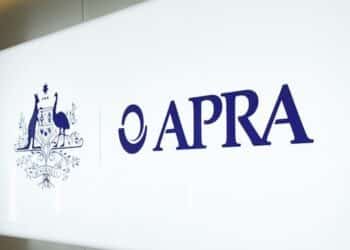Recently, ifa reported that nearly 84 per cent of financial advisers are willing to volunteer their time coaching school students in financial literacy, with some advisers saying greater collaboration is needed between the advice and education sectors as students are leaving the school system wanting in basic financial skills.
As RGM Financial Planners adviser Paula Siddle, who is undergoing research on the topic, said, “We have a lot of young people leaving the education system and they have not had exposure to financial literacy or planning to develop these skills. It can only be beneficial for finance professionals and secondary educational institutions to be able to build long-term relationships.”
Speaking to ifa, ASIC senior executive leader for financial literacy Miles Larbey said the best long-term approach to the issue of financial illiteracy at a high school level is to educate teachers. Teachers can then deliver elements of financial literacy to students under different units in the curriculum.
“The whole approach for ASIC’s MoneySmart Teaching Program is about trying to build the capabilities and confidence of teachers to teach financial literacy in schools – it is a systematic approach to building that capability,” Mr Larbey said.
“There is also a component around teachers’ own personal financial capability – one thing that we find is that when teachers become involved in this program one of the things they say is ‘well I don’t feel that confident in my own finances and my own financial literacy’, so there is actually a companion part of the program that’s designed to support their own levels of financial literacy and capability.”
On the idea of advisers collaborating with high schools to run financial literacy programs, ASIC said that, while there is a role for committed professionals to engage with their local schools, the best way to build a long-term and sustainable financial literacy program is by building the capability and confidence of teachers.
“The thing to note about advisers going into schools and running programs is that schools and teachers are very busy and it’s entirely up to the principal to decide. Their priorities of course are the curriculum – making sure the kids get the learning they need under the Australian curriculum,” Mr Larbey said.
Mr Larbey said there are elements of financial literacy embedded in curriculum subjects such as mathematics, English, science, economics and business.
“Programs run by advisers that could be seen as complimentary programs are really useful but it would have to be depending on if that worked for that school,” he said.
“One of the angles that perhaps may be a good way to look at it is – some financial advisers are parents themselves and therefore would be connected to the schools that their kids attend – we would really encourage financial advisers to talk to the principal and talk to the parents about encouraging schools to engage with ASICs Money Smart Teaching Program.
“So in that way they’re supporting financial literacy in a way that benefits the whole school and all the students.”
“There is always a role for more ambassadors for financial literacy in schools so planners who are in a position to engage with their local school – and I don’t mean that they have to start turning up and running programs in schools – planners can still be opening up discussions with their local principals and teachers and promoting the benefits of getting involved in the program of ASIC MoneySmart teaching because that approach is designed to have a long-term change and make sure the next generation have the skills that they need to be successful consumers in adult life,” he said.




I am a high school teacher married to an adviser. Even though I have gained some knowledge from my husband there is no way in the world I would attempt to teach financial literacy to my students. I don’t have the expertise or the understanding to impart such important information and skills to students. Nor do I have the time in my teaching program to do so. I have no problem with working with an adviser to put lessons together and coach them in delivery of information to students – that’s my area of expertise. My area of expertise is not in financial literacy. Let the experts in financial literacy such as advisers work together with teachers – experts in education to craft lessons to teach todays youth. I think it’s an important lesson to teach – just not by me.
There is old truism in our industry that engineers and teachers make the worst of clients. Over decades of dealing with such clients this has proved somewhat accurate. Teachers go to great lengths to understand the process and check the technicalities so often to the point of clouding the big picture strategy they came to me to address. Too much of the “what”, too little of the “why”. I have come to the considered opinion that teaching our students financial literacy is to teach them how to think strategically about their financial situation and goals. Whether teachers or industry specialists take responsibility for this is less important than we, as a community, agreeing what should be taught. Are we trying to make everyone a financial professional or just equipping the next generation to understand their own situation better and identify when they should seek more professional help.
Engineers and teachers actually make great clients (but they’re not easy) – because they’re willing to take responsibility for knowing about how things work, rather than the “just tell me what to do” or the “how much will I make?”. That information is so often not provided to clients but it’s wanted by the smarter ones but usually withheld from them by advisers keener to push their hot buttons to get them to act (or is it that many advisers don’t understand how things work themselves?). Advisers would do better explaining risks and structures so that more did LESS investing and MORE saving, but then they might not get paid as they wouldn’t meet quotas… I love it that about 50% of my clients are engineers and architects for that very reason – and they really appreciate someone explaining how financial things work, sometimes after searching for years for answers from multiple advisers.
ASIC have done such a wonderful job so far educating people.
Household debt in Australia has exploded.
Congratulations.
ASIC = AMATUER SLUTHS INQUIRING CARELESSLY
last thing is ASIC involved when it is so reactive rather than proactive
another BS article. You’ve stated that 84% of advisers said they would be willing to go into schools…but in a previous article on this topic, you made it clear that was 84% of a little straw poll you conducted online…84% of how many, exactly??!! And hear hear to ASIC – yes, much more sensible idea than having untrained educators — financial advisers — walking into classrooms. The mind boggles…
Didnt realise this was bash a teacher forum. I am an adviser but am forever grateful for everything given to me by teachers at primary, secondary tertiary and post graduate levels. Never occured to me to hate my maths teacher because he might have voted ALP.
But I wouldn’t be volunteering to teach financial literacy (and doubt 84% would either when it came to the crunch) – I spend my community time well away my professional life.
The Australian education system is failing to deliver even the basic curriculum and they want to further burden teachers when there are willing experts in the field offering to help. Sounds about right.
We can’t win as advisers can we. We say’ “we would love to give back to society, and help the next generation”, and immediately are told that we aren’t needed. if we do nothing we are “selfish and self Interested”. A sock jock on the radio last year compared financial advisers to paedophiles. It’s just open season all the time, without actually acknowledging that we are human beings who do good things, and assist clients to make good financial decisions. Teachers may have financial lives that are in a mess, and certainly may not have time in the crowded curriculum to teach financial literacy, but according to the article above, they are the one’s best qualified to teach financial literacy. “sigh” Its so much easier to watch governments and unions destroy the nations, and take care of number one
Who is going to teach the teachers? Maybe ASIC, FOS, FPA or someone who has zero experience in financial planning.
Of course the lawyers at the ASIC would say that – they know very little about financial literacy themselves. My experience is that most teachers are very left of centre and teaching kids about money management is something I think would be way beyond what their “socialist” intellects could could deal with.
Certainly not beyond my “socialist” intellect. Just not my area of expertise. Lets try not to bag out the educators. We do a very good job with your children and in the past with you to get you where you are. Occasionally it would be nice to be acknowledged for the great stuff we do and not bagged out for our philosophies even as stereotypical as you have made them.
Now there is a future distribution channel for the industry funds. Bias in education from union members!!!